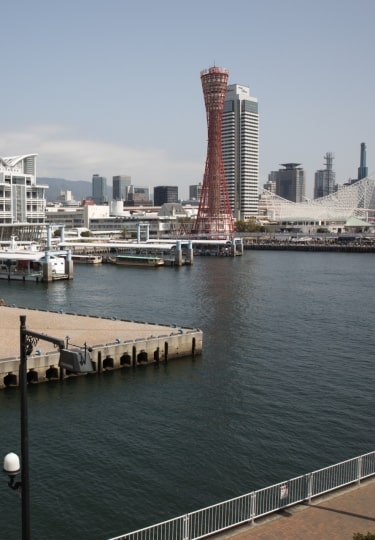The choice among the best things to do in Kobe, Japan ranges from ancient gems to futuristic wonders. Kobe is a busy port and modern city, a striking contrast to traditional neighboring Kyoto.
In Kobe, you have busy museums and tranquil Japanese gardens. Nearby, you will find the shrines and temples of Nara and Kyoto. On Mount Rokko, there are forests, hot springs, and hiking paths.
Kobe hosts the biannual Kobe Collection and its shopping reflects this high-profile status in the fashion world. It’s also notable for its cuisine, including the exquisite Kobe Beef and its sake rice wine, so you won’t be short of things to do in Kobe.
Shop in Sannomiya
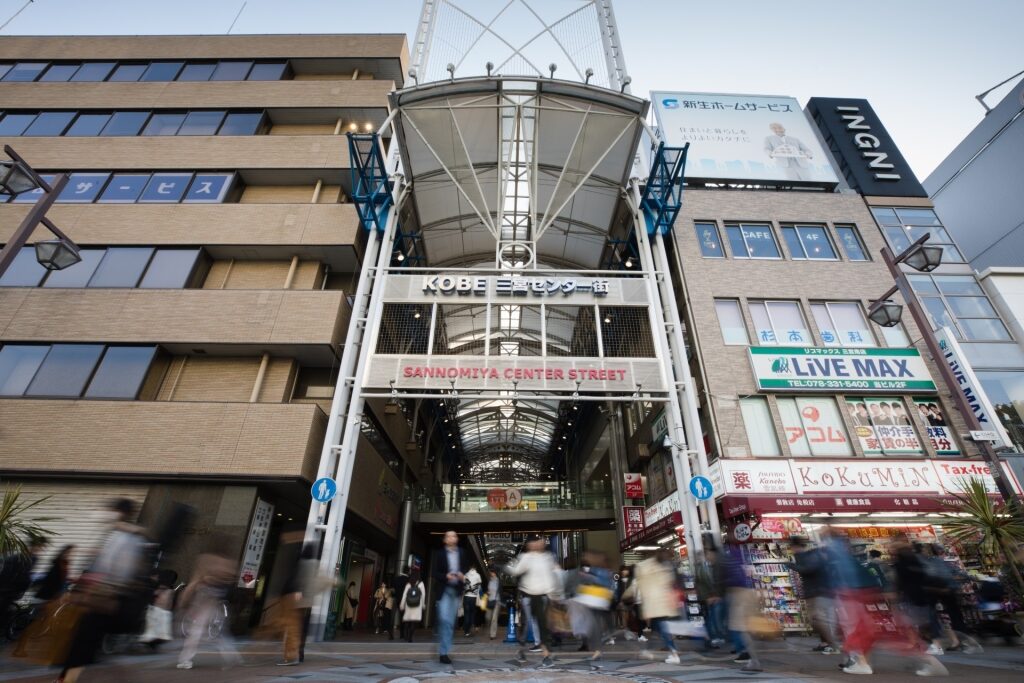
Sannomiya
Sannomiya is the heart of Kobe’s downtown area with major hotels, shopping, and restaurants. It’s named after the Sannomiya shrine, home to the god of safe navigation and commerce.
The area grew around the Sogo Department Store, now Kobe Hankyu, which has been here since 1933. Kobe Hankyu is still a good place for fashion and the ubiquitous Japanese basement food hall.

Sannomiya Center Gai Shopping Street
The Sannomiya Center Gai Shopping Street is a covered arcade that’s very popular on rainy days. It’s full of Japanese and international fashion brands, with plenty of coffee shops.
Sanchika is another popular shopping mall with about 120 stores. It spreads out from Sannomiya Station in a maze of underground passageways that are cool on hot summer days.
Visit the Museum of Art
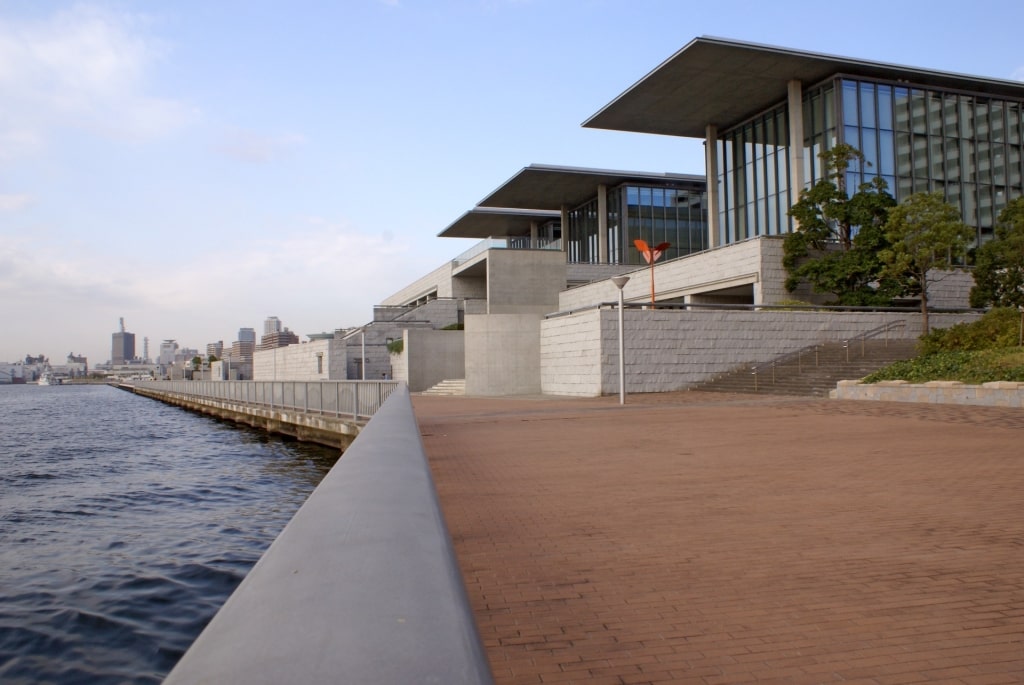
Hyogo Prefectural Museum of Art Photo by 663highland on Wikimedia Commons, licensed under CC BY-SA 3.0
The Hyogo Prefectural Museum of Art was a key part of Kobe waterfront’s revitalization. It houses around 10,000 works of art, including modern sculptures and prints from Japan and abroad.
The building was designed by Osaka-born architect Tadao Ando. It’s a simple but labyrinth-like structure where the light changes constantly.
The permanent collection boasts work by artists, both Western and Japanese, associated with this Hyogo prefecture. These works range from traditional Japanese woodblock prints to contemporary paintings.
Admire Tetsujin-28

Tetsujin-28 Photo by sk on Flickr, licensed under CC BY-ND 2.0
Tetsujin-28 is a 59-foot-high statue of a beloved comic book character. His name translates as “Iron Man 28” but he’s best known as Gigantor in English.
The statue was put up alongside others in Wakamatsu Park on the 15th anniversary of the 1995 Kobe Earthquake. The hope was to encourage visitors back to the devastated area.
Although first seen in the 1950s, the amiable robot remains popular through cartoon and live-action films. His creator was local artist Mitsuteru Yokoyama, who lived through WWII as a child.
Escape to Mount Rokko
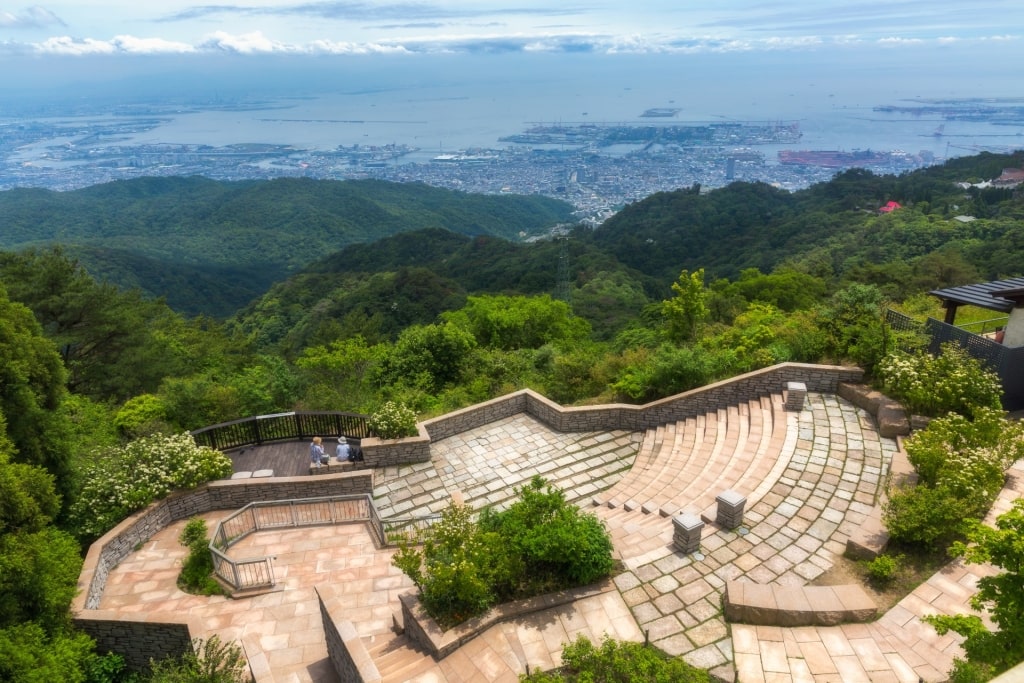
Mount Rokko
Despite its name, Mount Rokko is not a single peak but a forested mountain range. It’s a popular spot for Kobe residents to enjoy nature and scenic hikes.
There is a cable car running up the mountain with a rope-way connecting to Arima Onsen, one of the oldest hot spring resorts in Japan.
The Japanese mountain reaches just over 3,000 feet in height and you can see over Osaka Bay and Kobe. On top, there is a botanical garden and Tadao Ando’s mystical Church of the Winds.
At the base of the mountain, there is a lovely Musical Box Museum. After seeing its priceless collection of antique boxes, enjoy the Viennese-style Strauss café.
Be Awed by the Akashi-Kaikyo Bridge

Akashi-Kaikyo Bridge
One of the most beautiful places in Japan, the Akashi-Kaikyo Bridge is an engineering marvel with a central span that was the world’s longest when built in 1998. That span is one and a quarter miles long, with the whole being two and a half miles in total length.
The bridge is one of the most expensive construction projects ever. It links Kobe on the mainland to Awaji Island across the busy, treacherous Seto Inland Sea.
The harsh currents and storms of the Akashi Strait have caused several ferry disasters, which eventually led to calls for a bridge. The design has to withstand winds up to 180 mph, as well as major earthquakes.
Its two supporting towers are taller than the Eiffel Tower. Nearly 2,000 computer-controlled lights put on regular displays during holidays and other celebrations.
Strut Through the Fashion Museum
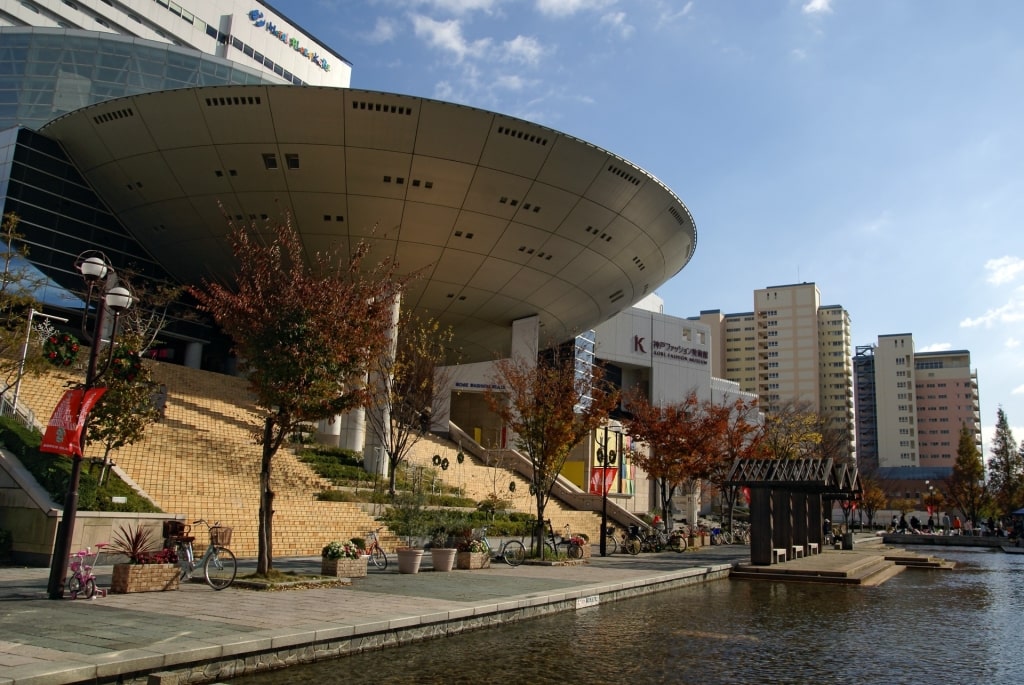
Kobe Fashion Museum Photo by 663highland on Wikimedia Commons, licensed under CC BY 2.5
The Kobe Fashion Museum on Rokko Island celebrates costumes from the 18th century to the present day. Its collection includes more than 10,000 pieces of clothing, accessories, and other items. If you’re interested in fashion, a visit here is one of the best things to do in Kobe.
Highlights include 19th-century European clothing, 20th-century haute couture, and pieces from renowned Japanese designers. Regular special exhibitions complement the permanent collection.
The museum building is by Tadao Ando in his typical minimalist concrete style. The self-taught architect has been central to rebuilding Kobe after the 1995 earthquake.
Photograph Kyoto’s Golden Pavilion

Golden Pavilion, Kyoto
Kyoto, about an hour’s drive from Kobe, is a city where traditional Japan is seen at its finest. Among the many things to do in Kyoto, Kinkaku-ji, also known as the Golden Pavilion Temple, stands out for its beauty.
Officially called Rokuon-ji or the Deer Garden Temple, this has been a Buddhist temple since 1408. It was originally built in 1397 as a retirement home for a shogun.
Kinkaku-ji’s common name comes from the gold leaf covering its upper two floors. Each of its three floors shows off a different style of Japanese traditional architecture.
The temple is a photographer’s delight as it sits amid tree-filled gardens. A pond in the garden provides perfect reflections to double the appeal.
Feed the Deer in Nara Park

Nara Park
An hour away from Kobe is Nara, the capital of Japan from 710 through 784 CE. Nara Park is famed for the hundreds of tame sika deer that roam freely.
Within the park are Kasuga-Taisha, an important Shinto shrine, and Todai-ji, a major Buddhist temple. Kasuga’s Chinese-style roof and thousands of stone lanterns are particularly photogenic.
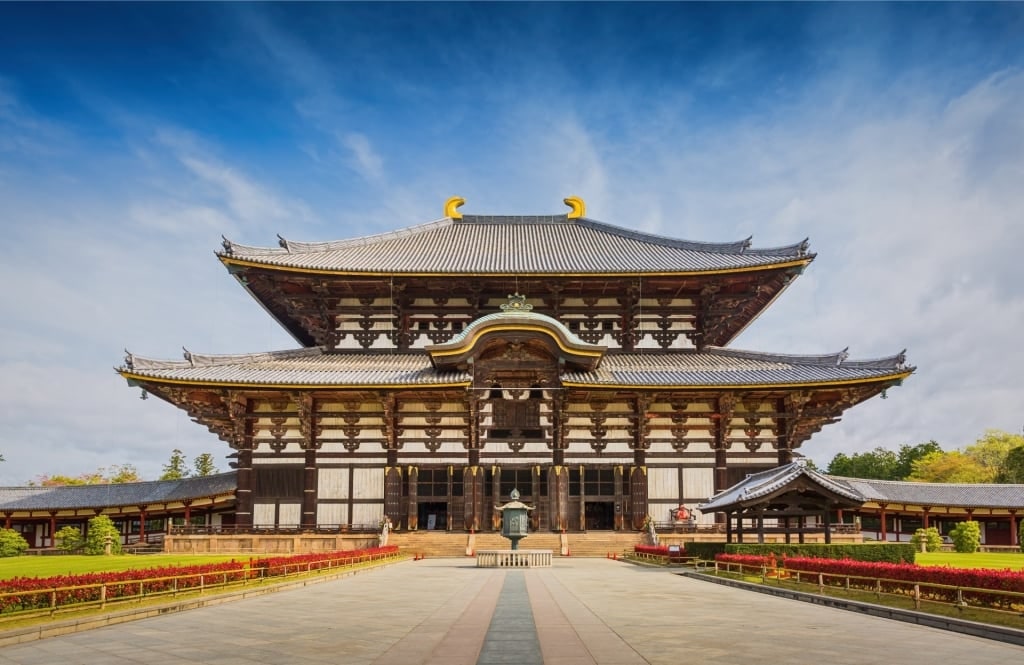
Todai-ji Temple, Nara
Todai-ji’s main hall, the Daibutsuden, is one of the largest wooden structures in the world. It holds a giant 1,200-year-old bronze Buddha that is now a symbol of Nara.
The deer in Nara Park are thought to be sacred messengers in both Shinto and Buddhism. Vendors sell special crackers to feed them with but the deer can be very cheeky.
Take the Ropeway to Nunobiki
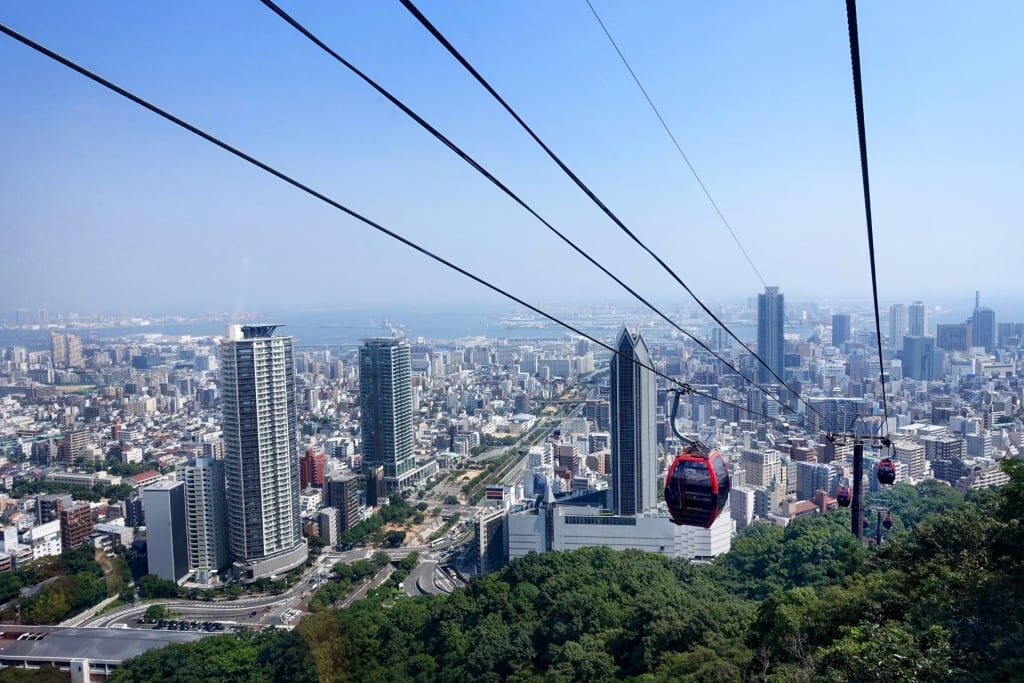
Kobe Nunobiki Ropeway
One of the most popular outings for Kobe residents is the Nunobiki Herb Garden. Sitting on the slopes of Mt. Rokko, it’s easily reached by a ropeway or aerial lift.
The ropeway has four stations along its three-quarter-mile length and passes the pretty Nunobiki Waterfall. The highest station is a good starting point for mountain hikes.
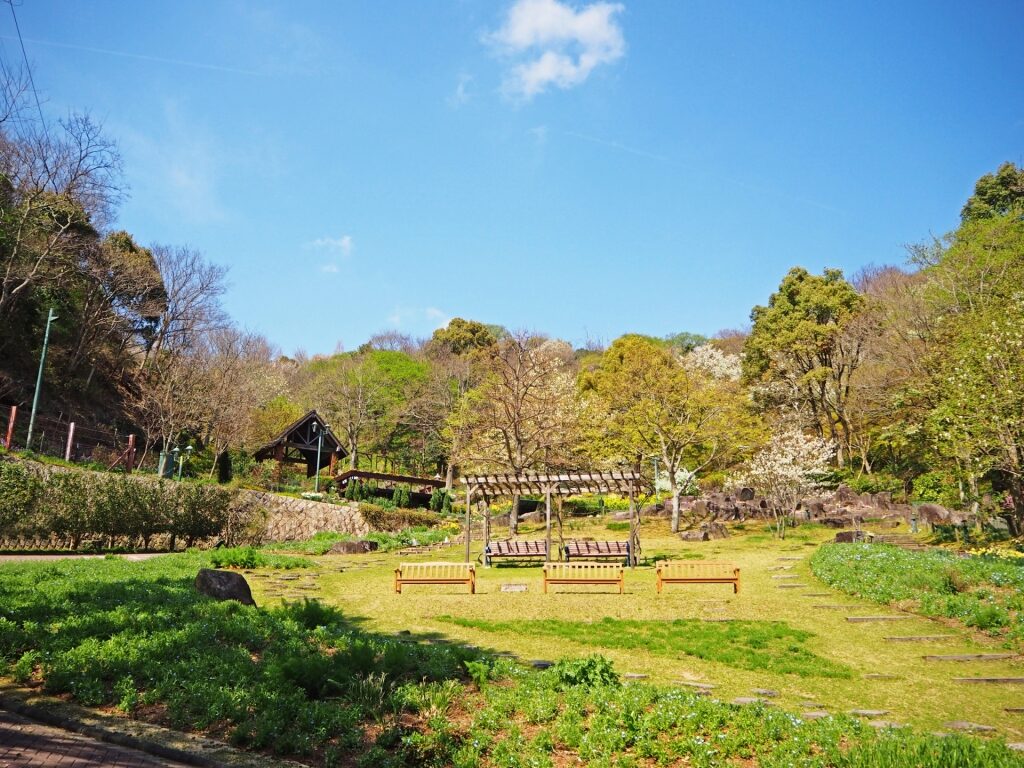
Nunobiki Herb Garden
The Herb Garden is one of the largest in Japan, with some 200 varieties of herbs, flowers, and trees. Paths wind through different themed gardens and a glasshouse grows fruit such as pineapple.
Go Back in Time at the Foreigners’ Houses

Foreigners’ Houses
After the Japanese city of Kobe opened up in 1868, the Kitano neighborhood was designated as an area for foreigners to live. The Kitano Ijinkan, also known as Foreigners’ Houses, area preserves around 20 of the European-style homes built by traders and diplomats.
Notable examples include the art nouveau Kazamidori no Yakata, or the Weathercock House. Built for a German trader around 1909, its weathercock atop a red brick steeple is now a symbol of the area.
The green sidings of the Moegi no Yakata also stand out. This was built for American Consul General Hunter Sharp in 1903 and its bay windows have great harbor views.
Feel the Buzz in Chinatown
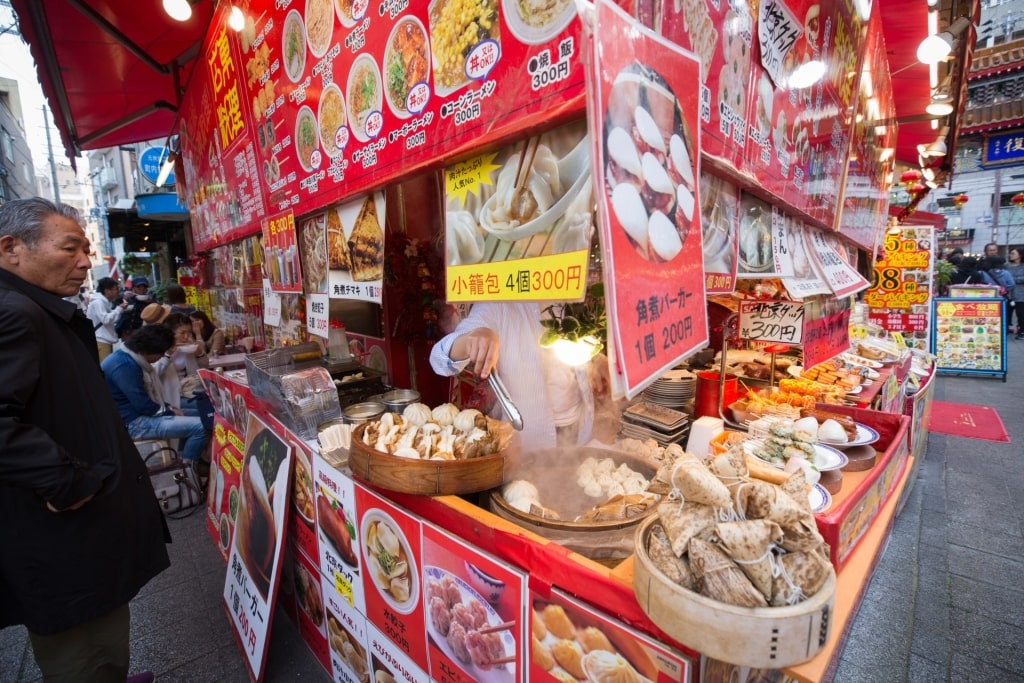
Chinatown
Kobe’s atmospheric Chinatown is one of the three largest in Japan. Named after Nanjing, the former Chinese capital, Nankinmachi is a compact, colorful area in central Kobe.
Its two main streets, lined with shops and restaurants, meet in the small Azumaya plaza. There’s a temple and plenty of Chinese lanterns and sculptures.
Nankinmachi is popular for its Chinese cuisine, although there is an obvious Japanese influence to much of it. However, you can eat Peking duck and try Hong Kong or Taiwanese-style favorites.
Study the Harborland Mosaic
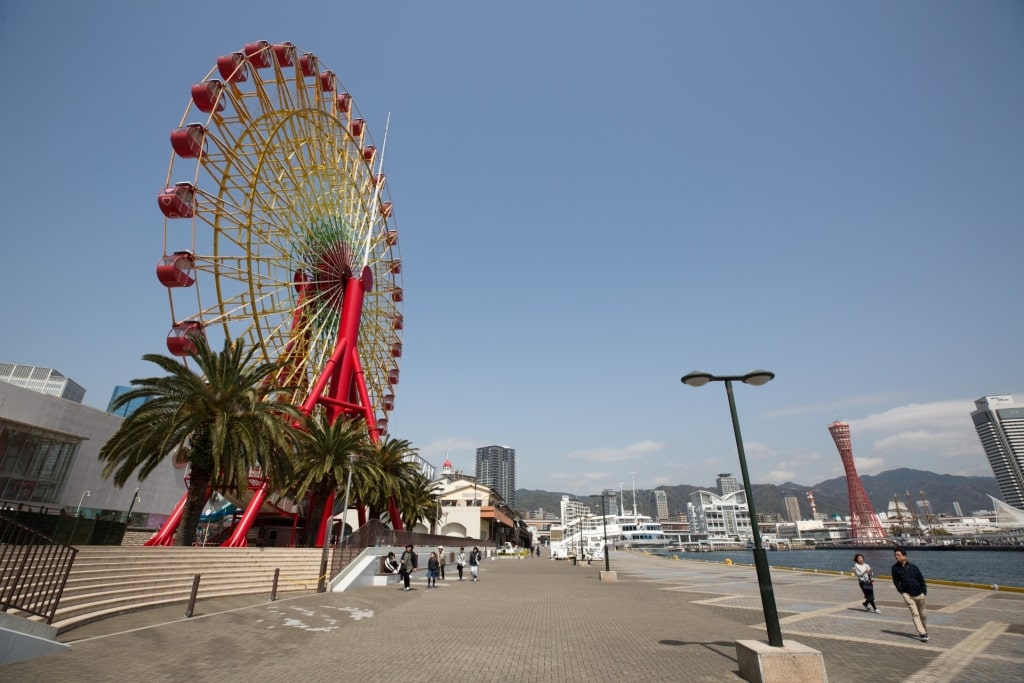
Harborland Mosaic
The massive harborfront development around the Maritime Museum has shopping, dining, entertainment, and other attractions. One of these is the Kobe Mosaic, a long street decorated with beautiful mosaic art displays.
The street runs between Kobe City Hall and the Ikuta Shrine for about 500 yards. The tiles were part of a community project following the 1995 earthquake.
The designs show scenes of Kobe, its port, ships, and flowers. They also have uplifting messages about hope and recovery.
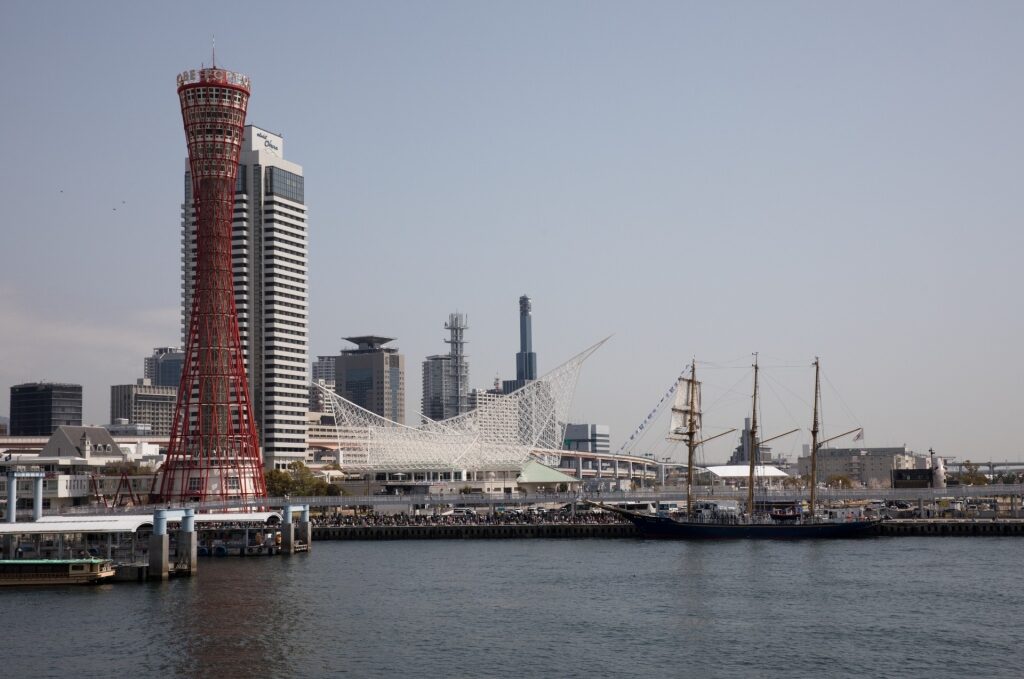
Harborland Mosaic
With fountains, sculptures, and benches, this is a lovely area to relax in. Nearby is the Meriken Park, whose lush gardens are popular for picnics and sightseeing strolls.
Explore the Maritime Museum
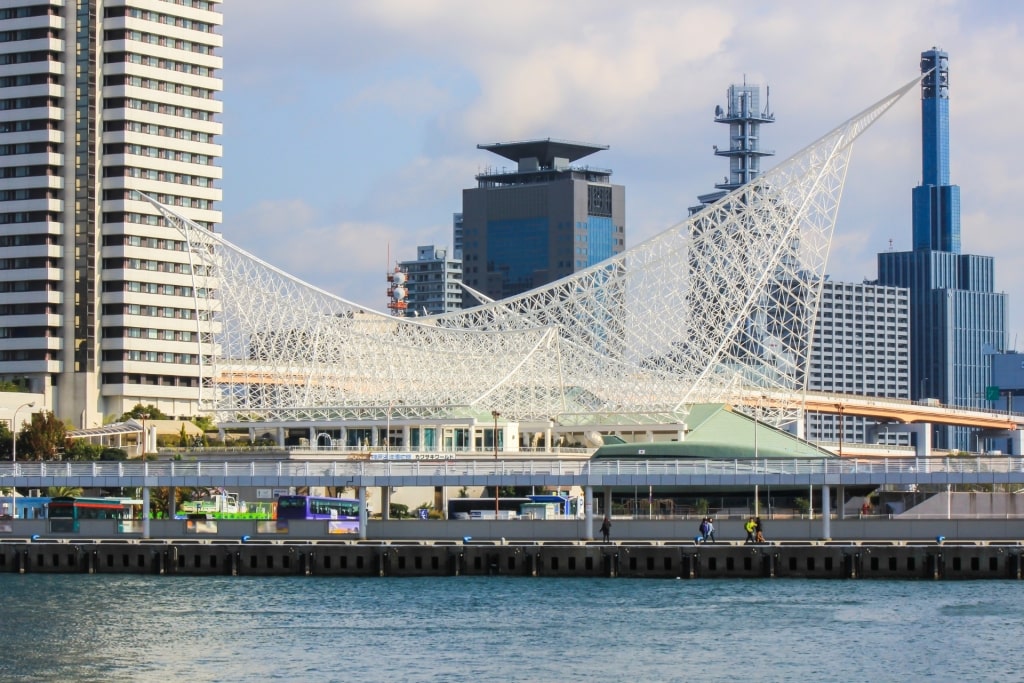
Maritime Museum
Kobe Maritime Museum details the port’s rich history of international trade and shipbuilding. Sitting on the waterfront, its sail-like white roof is a major city landmark.
Exhibits cover areas such as Kobe’s fishing industry, marine life, and the workings of the port. The cramped life of sailors at sea is shown in recreated living quarters.

Kobe Port Tower
The 350-ft-high, red-latticed Kobe Port Tower adds panoramic views over Osaka Bay. Regular boat tours let you see more of the shipping that use it.
Within the museum building is the excellent Kawasaki Good Times World. This is dedicated to the company’s famous motorcycles, as well as its shipbuilding and aviation history.
Pay Respect in Earthquake Memorial Park

Earthquake Memorial Park
Looking around Kobe today, it’s hard to imagine the devastation caused by the earthquake of 1995. The Kobe Earthquake Memorial Park reminds you of the tragic events here that killed thousands.
The park is near the epicenter of the quake and damaged buildings still stand as memorials. There is a Memorial Sculpture and a Requiem Monument recalling unidentified victims.
At the Earthquake Memorial Museum, you can learn more about the quake. There is even a room that recreates the feeling of being in one.
Artifacts such as crushed cars, videos, photographs, and survivors’ accounts bring the past to life. An exhibit on lessons learned to make buildings safer ends your visit on a note of optimism.
Stroll the Sorakuen Garden
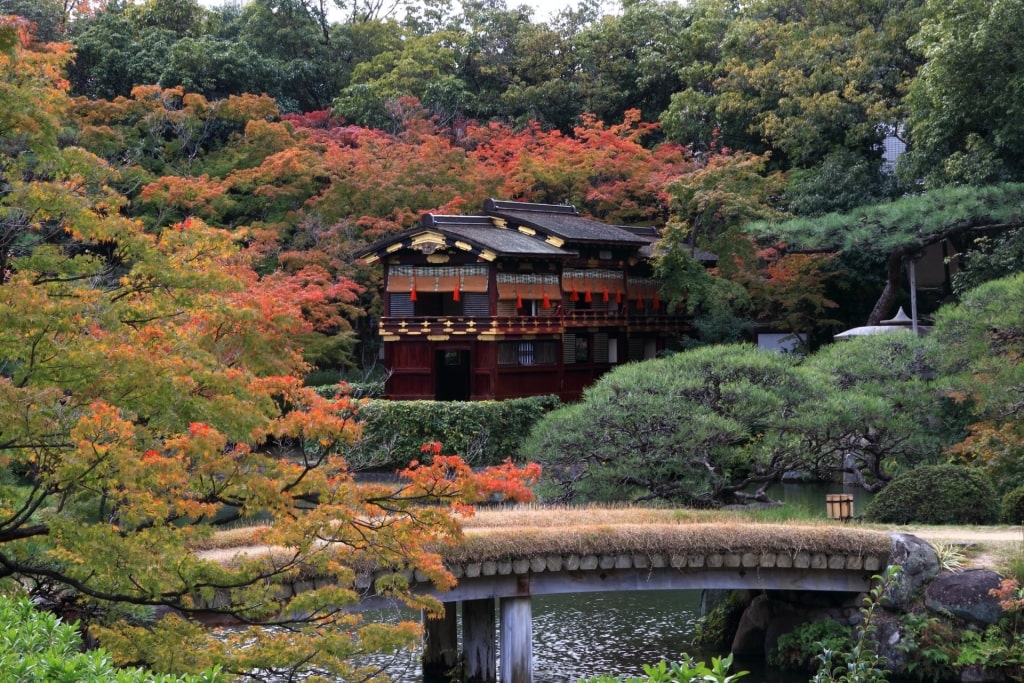
Sorakuen Garden
One of the top landscape gardens that Japan is known for, Sorakuen was created in 1935. Back then, it was a private garden for the wealthy Sorakuen silk trader family.
It is a classic “Strolling” garden, with walking paths around a central pond. As you stroll, you cross stone bridges and stepping stones and then come upon a teahouse.
An artificial hill represents Kobe’s Mount Mayo in miniature, with streams, waterfalls, and landscaping. Some 200 trees and other beautifully tended plants, bring lovely views at every turn.
Eat Kobe Beef
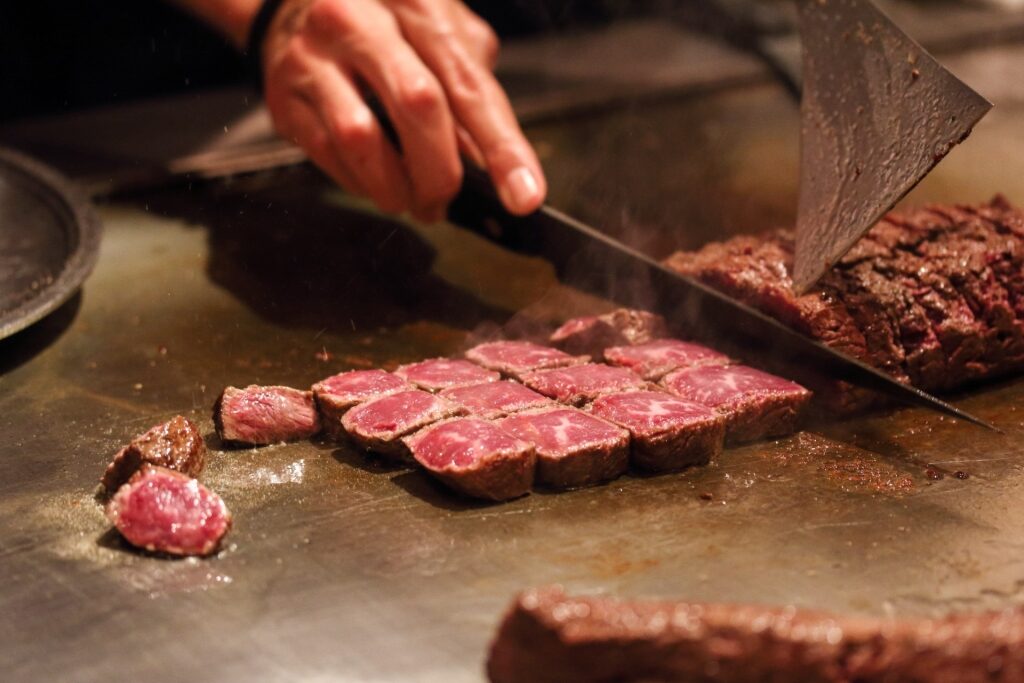
Kobe beef
You may well have heard of Kobe beef and certainly of the finely marbled, tender Wagyu beef. Kobe beef comes from a special local breed of Wagyu cattle, raised to even higher standards than “normal” Wagyu.
In Kobe, steak is normally done teppanyaki-style, cooked in front of you by a knife-wielding chef. The steak will usually be served with soup, rice, and vegetables.
For the best restaurants, as is the norm in Japan, reservations are a necessity. However, you might well find a walk-in catering to foreign visitors, especially at lunchtime.
The most famous steak restaurants include Mouriya, Wakkoqu, or Misono. Wherever you decide to eat at, Kobe Beef is a memorable, melt-in-your-mouth experience.
Read: What to Eat in Japan
Try a Sake Tasting
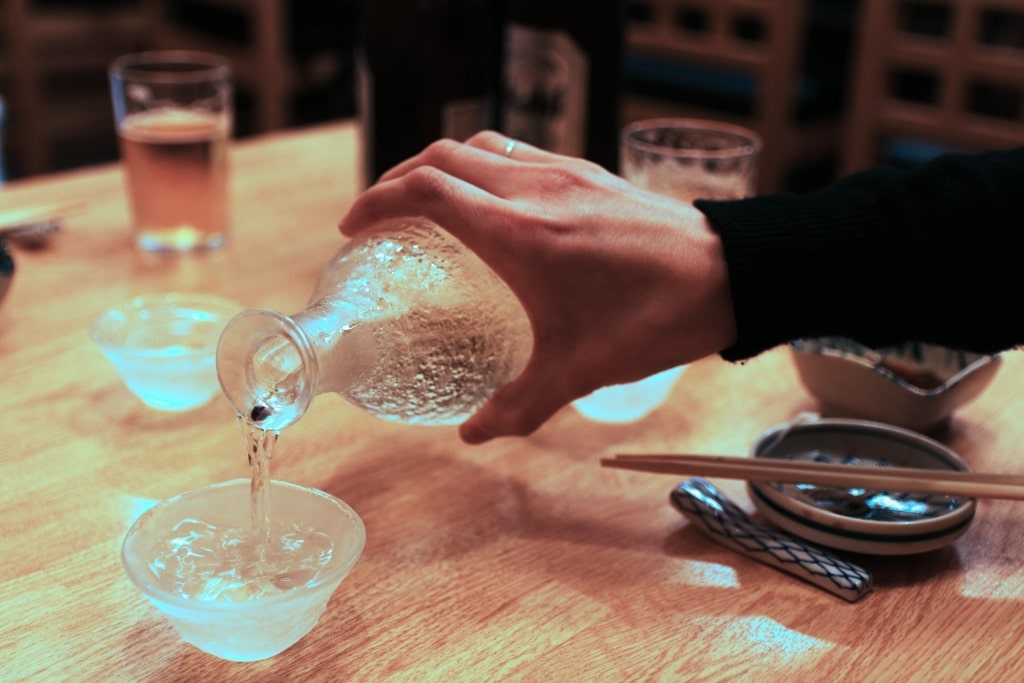
Sake tasting
Sake or rice wine is one of the best things to buy in Japan, and Kobe’s Nada district is the country’s top sake-producing region. The premium local rice, fresh spring water, and suitable weather combine into a high-quality product.
Nada has numerous working sake breweries, most of which welcome visitors. You can learn about the distillery process, sample their sake, and buy the ones you like.
Although other breweries have better sake, the Hakutsuru Brewery Museum is a good stop for those wanting more depth. Their exhibits have English translations and they also offer varied tastings.
Handle the Tools at the Carpentry Museum
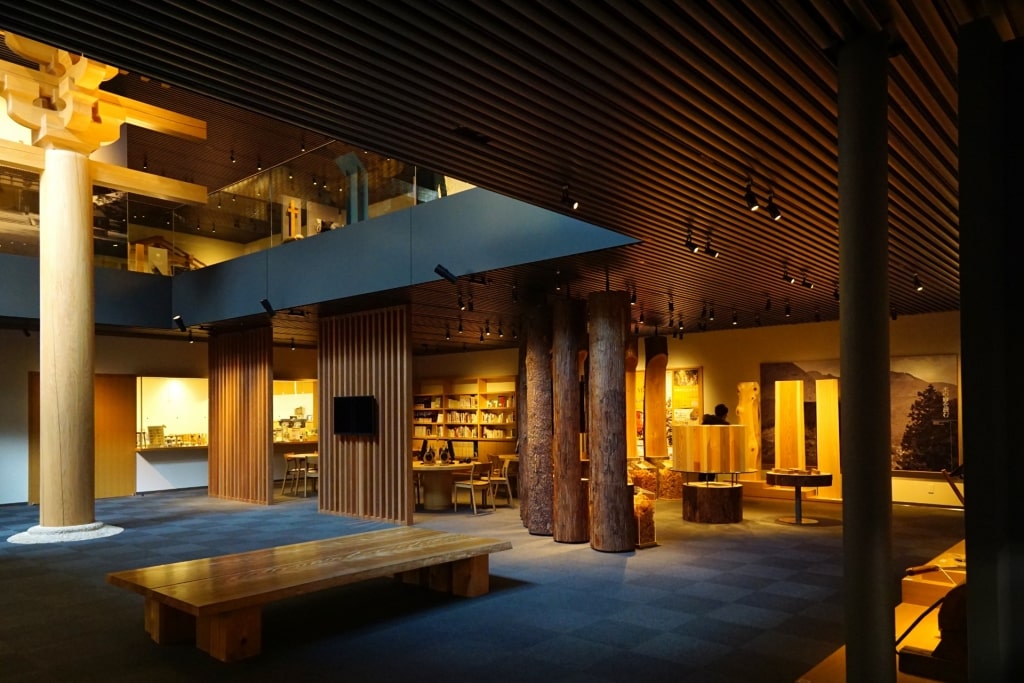
Takenaka Carpentry Tools Museum Photo by 663highland on Wikimedia Commons, licensed under CC BY-SA 3.0
Near the base of Mount Rokko is the Takenaka Carpentry Tools Museum. This small gem is fittingly housed in a beautifully crafted wooden building.
Opened in 1984, it’s the only museum in Japan devoted to traditional Japanese carpentry. As well as tools through the ages, some of which you can handle, it displays items such as complex miniature joints to study in detail.
The museum is more hi-tech than you might expect, with plenty of videos and an audio guide. Finally, the shop has stylish products such as jigsaws, keychains, and pen-knives, all on a wood theme.
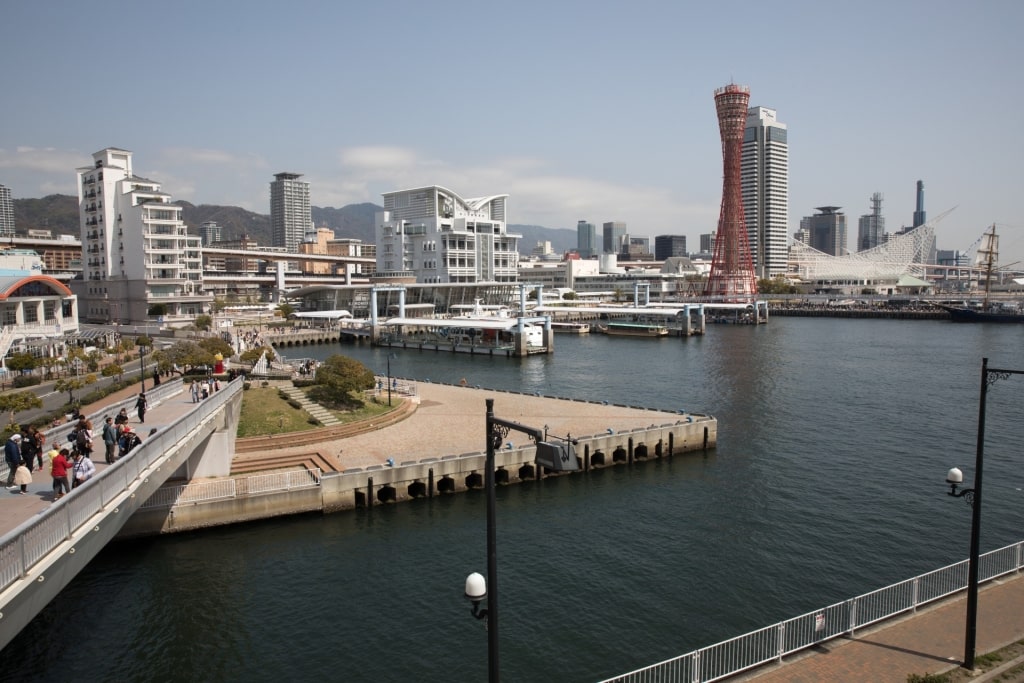
Harborland Mosaic
Are you tempted to discover more about Kobe? Then browse our cruises to Kobe and start planning an incredible Japan vacation.
